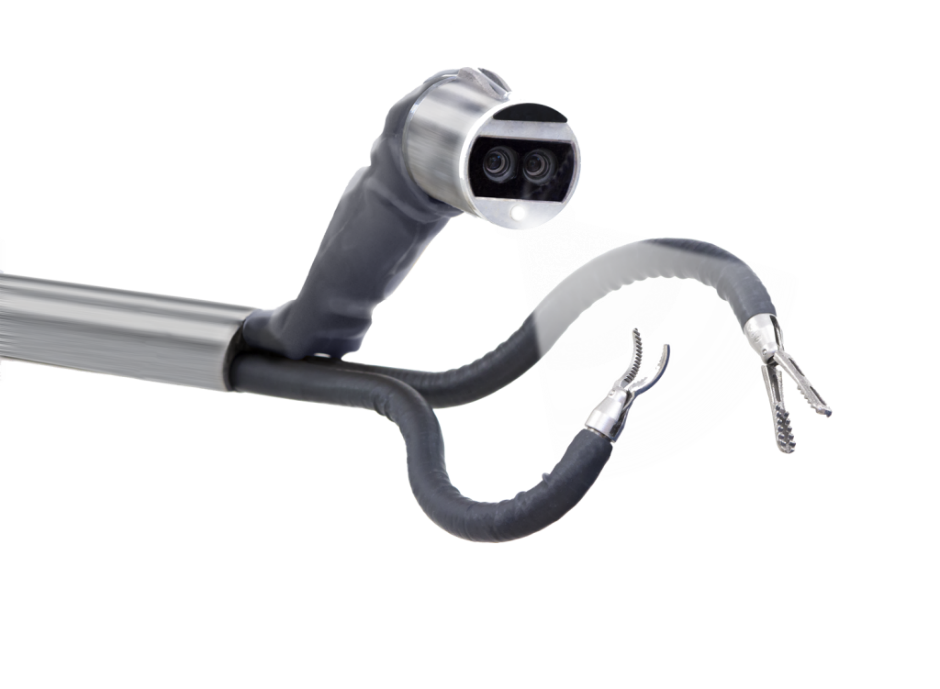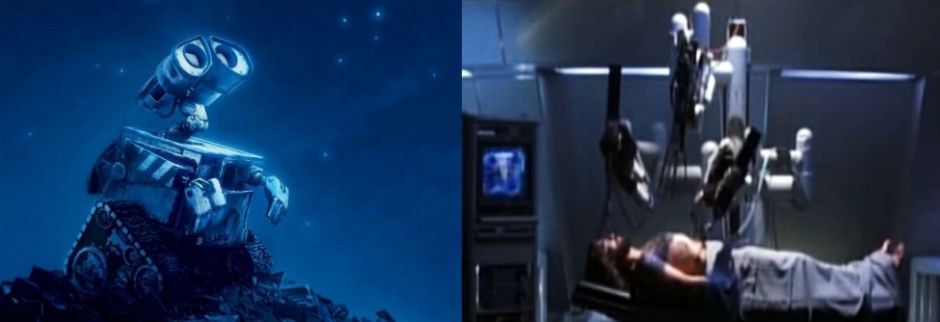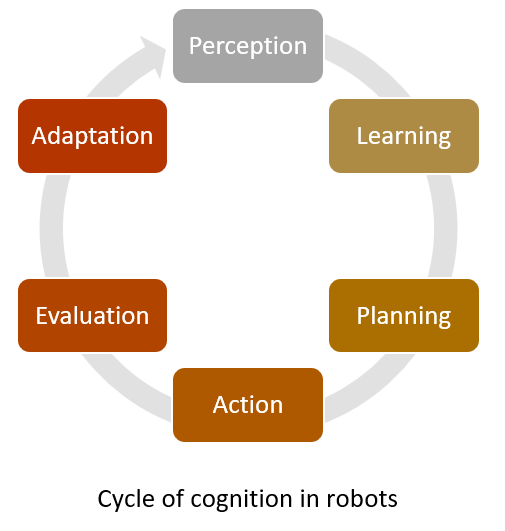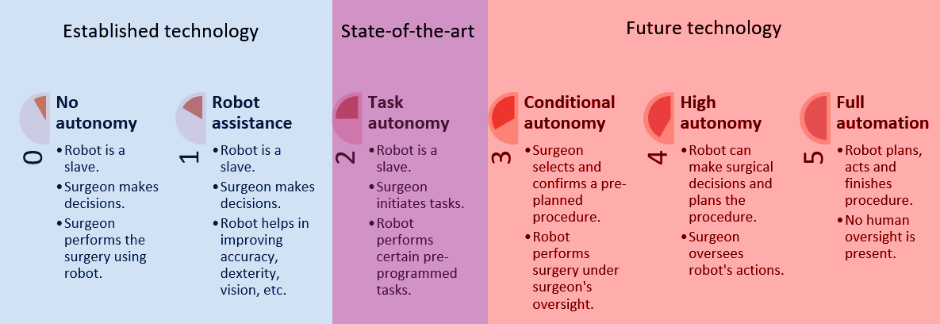Robotic Surgery State of the Art and Future Trends Scholar
![]()
Weblog mail
Robotic surgery and surgical robots
Part I: Who (or what) is a robo-surgeon?
 Credit: Titan Medical Inc.
Credit: Titan Medical Inc.
Haah… good former days. I remember watching Paul Verhoeven's RoboCop (1987) when I was in fourth course (1995). You lot are right, RoboCop is not 1000-rated, and I wasn't supposed to. Anyhow, RoboCop formed my first impression of a robot. For some others, R2-D2 from George Lucas's Star Wars (original, 1977) might have been the first impression of a robot.
The first advent of a real surgical robot in a picture show before public eyes was in 2002 when Da-Vinci surgical robot (Intuitive Surgical, CA) was drawing claret from James Bond in Die Another Day.
Only seriously, how accurate are these fantasized images? Are real robots as agile, invincible, self-repairing, and cocky-sufficient as those pictured in the movies? More than importantly, is a robot fundamentally able to bequeath Beloved, similar the beautiful Wall-E? Or even less, is it able to make decisions, like choosing between "to cut" or "to knot" during a surgery? Plain distressing truth, Non Withal. 1 may recollect, okay then, what is the notion of "surgical robots" on this ground? Or is the everyday media propaganda on the ground-breaking advancements in robotic surgery "FAKE NEWS?"
 Left: Wall-E (from Wall-E, Andrew Stanton, 2008). Correct: Da-Vinci robot cartoon blood from James Bond (from Die Some other Day, Lee Tamahori, 2002)
Left: Wall-E (from Wall-E, Andrew Stanton, 2008). Correct: Da-Vinci robot cartoon blood from James Bond (from Die Some other Day, Lee Tamahori, 2002)
In lodge to reply these doubts and to distinguish between reality and fantasy, I take planned to share my insights with you in a series of five blogs. In my blogs, I will cover the characteristics of surgical robots, as well every bit the current state-of-the-art and futurity trends in robotic surgery.
In this blog, I will describe four key characteristics of robots: programmability, mobility, knowledge, and feedback in the context of the surgical application. Cognition of these characteristics, I believe, is essential for differentiating between myth and truth.
Programmability makes robots different from machines
We all employ different electromechanical machines routinely. Automobiles, accident-dryers, elevators, and drills are just a few palpable examples. One could imagine every unmarried tool available at Home Depot as a auto. Non all of them are robots, though.
The most important differentiator between a machine and a robot is programmability. We use machines for their intendedapplications, while a robot is intendedto exist used in dissimilar applications. This happens through programming a robot. For example, a drill always makes holes, a sewing machine sews, and no one could imagine a sewing machine making muffins! However, you tin can sentry a UR5 robot making succulent German BratWursts here, treatment fabrics in garment sewing here, and inserting an endoscope into a manikin's belly, hither. The difference in awarding is just about programming.
Mobility differentiates robots from computers
Programmability is not an exclusive property of robots. Computers and advanced calculators are also programmable. Similarly, mobility is not a unique characteristic of robots. However, the two combined, brand a robot unique: mobile programmable creature.
Mobility is the extent of the ability of a robot to motility or access the space around it. In terms of mobility, robots vary from fully-mobile, e.grand. Atlas humanoid (Boston Dynamics, MA, United states of america), to stationary, e.thou. MYNUTIA heart surgery robot (Mynutia, Belgium).
Cognition is the ability of a robot to perceive, learn, program, act, evaluate and adapt
How hideous is a programmable mobile beast without a brain! It reminds me of those dumb alien robots in Star Wars, flight effectually, lasing at no target and finally great into another.
Cognition is a procedure starting from perception or sensing. Different chemical or electromechanical sensors could exist used for this purpose, e.1000. temperature, pressure level, position sensor, etc. Based on the extent of utilizing sensors for acquiring data, robots are categorized as self-enlightened and/or periphery-aware. Knowledge of its own land, e.one thousand. position, location, speed, etc. makes a robot cocky-aware; while, noesis of its environment, east.thou. temperature, size, location, distance, etc. makes a robot periphery-aware.

Following the perception, comes learning. Learning is the process of finding the repeatable response of environment to certain actions of the robot. For instance, a surgical robot may learn if I push button this needle and so hard information technology pierces the kidney.
When a robot understands the consequences of a item activeness programmatically, it could plan to obtain specific outcomes or avoid others. For instance, a cardiac surgery robot learns how to press needle into the heart tissue to pierce it plenty for suturing, while preventing laceration and excessive tear. A more complex robot, say doing a surgery on lungs, learns to adapt its maneuvers based on the respiratory motions of the lungs.
Intelligence is a result of cognition. I would define robotic intelligence as the full cognition wheel every bit depicted to a higher place. However, the word intelligence is overused and disregarded, I believe. Near people imagine a robot like R2-D2 or RoboCop when they hearintelligent robot. Intelligence leads to decision-making and autonomy. Intelligence and autonomy have been the biggest fears of a group of intellectuals, east.grand. Elon Musk. An elite group of pioneers in the field of surgical robotics take proposed the post-obit nomenclature for surgical robots in terms of autonomy, (source). Based on their postulations, our current state-of-the-art is far from fully-autonomous surgical robots.

… and finally, feedback is necessary for united states to supervise a robot's actions
A robot usually works remotely from its supervisor/controller/operator. Therefore, a continuous stream of information reporting its own and peripheral conditions is necessary for safety and effective maneuvers. For a surgical robot, a patient'southward vital signs, the mechanical pressure level of the robot on the patient, the softness of the tissue the robot is touching, the size and location of bumps, lumps or tumors are a few examples of feedbacks.
Since palpation plays a crucial part in manual surgery for the identification of different tissues, and since it is not present in robotic surgery, tactile (sense of touch) and haptic (perception of motion in joints) feedbacks are of utmost importance for surgical robots. There are various types of sensors and systems for transferring these feedbacks to the easily of surgeon.
Robo-surgeon fiction or truth?
In this blog, I introduced the four main characteristics of a robot and elaborated on them with examples from the realm of surgical robots. Back to the original question, in the electric current state-of-the-art, a surgical robot is a programmable, mobile, and intelligent machine capable of giving live feedback to a surgeon which can just serve as a simple tool or a supervised banana in handling surgical instruments. The truth is…whatsoever expectation beyond that is yet a far-fetched dream.
My side by side weblog volition be on the treatments performed with surgical robots, pros and cons of such treatments, and a brief introduction to the big shot companies designing and developing surgical robots.
About the writer

Amir Hooshiar received his Bachelor's and Master's in Biomedical Engineering with Honours from Amirkabir University of Tehran, Iran. He served as a Certified Medical Devices Expert for ix years before joining Concordia. Amir is a Vanier Scholar and the recipient of the prestigious NSERC Gilles-Brassard Doctoral Prize for Interdisciplinary Research in 2018. His doctoral inquiry is under supervision of Dr. J. Dargahi on recreating tactile sensing and haptic feedback for surgeons during robot-assisted cardiovascular interventional surgery.
Back to summit
© Concordia University
Concordia University uses technical, analytical, marketing and preference cookies. These are necessary for our site to role properly and to create the best possible online experience.
Source: https://www.concordia.ca/cunews/offices/vprgs/sgs/public-scholars-18/2018/06/12/robotic-surgery-and-surgical-robots-part-one-who-or-what-is-a-robo-surgeon.html
0 Response to "Robotic Surgery State of the Art and Future Trends Scholar"
Post a Comment